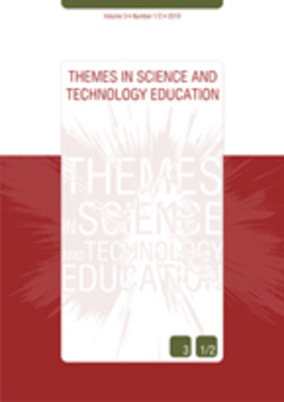Korthagen’s ALACT model : Application and modification in the science project “Kolumbus-Kids”
Part of : Themes in science and technology education ; Vol.7, No.1, 2014, pages 19-34
Issue:
Pages:
19-34
Abstract:
In order to improve one’s teaching in the long run, reflection on the lessons makes up an integral part in the process of developing a sufficient reflection competence. The problem, however, is how this reflection competence can be established in student teachers already and if that concept is compatible with current systems of teacher education at all. One technique of reflection stems from Fred Korthagen’s research, suggesting that colleagues should help evaluate each other’s lessons. After having held the lesson, the teacher is asked to look back at it, realising important aspects from a distanced point of view and drawing conclusions for further teaching. It should also be thought about alternatives. While theoretical input on reflection is given in the first part of the article, the second half focuses on the adaption of Korthagen’s approach for the tutoring project “Kolumbus-Kids”. The project very successfully implements the ALACT model (action – looking back – awareness of essential aspects – creating alternative methods of action – trial) in teacher education at university and a checklist provided at the end provides an overview of the extensive set of questions to be used in the reflection process.
Subject:
Subject (LC):
Keywords:
Reflection, action competence, teacher education, Korthagen, ALACT model
Notes:
Appendix with check list
References (1):
- Borgmann, A., & Wegner, C. (2011). Wissenschaft 2.0 mit Kolumbus-Kids. Zeitschrift für Medienpädagogik, 55(3), 80-81.Brouwer, N., & Korthagen, F. (2005). Can teacher education make a difference?. American Educational Research Journal, 42(1), 153-224.Calderhead, J. (1989). Reflective teaching and teacher education. Teaching and Teacher Education, 5(1), 43-51.Freudenthal, H. (1978). Weeding and sowing: Preface to a science of mathematical education. Dordrecht: Reidel.Goodman, J. (1985). Making early field experience meaningful: An alternative approach. Paper presented at the Annual Meeting of the American Educational Research Association, April 1985, Chicago.Helmke, A. (2003). Unterrichtsqualität erfassen, bewerten, verbessern. Seelze-Velber: Kallmeyer Verlag.Jank, W., & Meyer, H. (2005). Didaktische Modelle. Berlin: Cornelsen Verlag Scriptor.Korthagen, F., & Kessels, J. (1999). Linking theory and practice: Changing the pedagogy of teacher education. Educational Researcher, 28(4), 4-17.Korthagen, F. (1999). Linking reflection and technical competence: The logbook as an instrument in teacher education. European Journal of Teacher Education, 22(2/3), 191-207.Korthagen, F., Loughran, J., & Russell, T. (2006). Developing fundamental principles for teacher education programs and practices. Teaching and Teacher Education, 22, 1020–1041.McIntyre, D., & Hagger, H. (1992). Professional development through the Oxford Internship Model. British Journal of Educational Studies, 40(3), 264–283.Meyer, H. (2008). Was ist guter Unterricht?. Berlin: Scriptor Verlag.Obst, G. (n.d.): Zur Konzeption einer kollegialen Unterrichtsberatung. Retrieved 10 June 2013, from http://www.studienseminar-paderborn.de/plaintext/downloads/obstkollegialeunterrichtsberatung.pdfRussell, T. (1988). From pre-service teacher education to first year of teaching: a study of theory and practice. In J. Calderhead (ed.), Teachers’ professional learning (pp. 13-34). London: Falmer Press.Scherff, L., & Singer, N. R. (2012). The preservice teachers are watching: Framing and reframing the field experience. Teaching and Teacher Education, 28, 263-272.Spörhase-Eichmann, U., & Ruppert, W. (eds.) (2004). Biologie-Didaktik: Praxishandbuch für die Sekundarstufe I und II. Berlin: Cornelsen Verlag Scriptor.Wegner, C., & Grotjohann, N. (2010). Förderung naturwissenschaftlich begabter SchülerInnen im Projekt ‘Kolumbus-Kids’. ABB Drucke, 9, 55–65.Wegner, C., Minnaert, L., & Strehlke, F. (2013). The Kolumbus-Kids project in Germany for gifted children. Primary Science, 130, 16-20.




